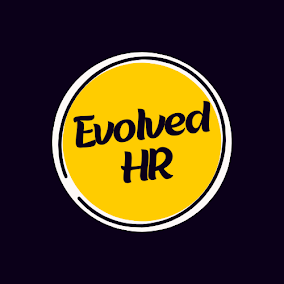Creating a Safe and Respectful Workplace: Managing Harassment and Discrimination
No one deserves to feel unsafe or unwelcome at work. Unfortunately, workplace harassment and discrimination remain prevalent, impacting individuals and hindering organizational progress. While eliminating these issues entirely requires sustained effort, proactive measures can create a more inclusive and respectful environment for everyone.
 |
| Image in background: Yan Krukau |
Advance your career: as an HR Business Partner: Click here!
Recognizing the Signs:
The first step is understanding what constitutes harassment and discrimination. Harassment involves unwelcome conduct based on protected characteristics like race, gender, religion, disability, or age. This can include offensive jokes, insults, threats, intimidation, or physical assault. Discrimination occurs when individuals are treated unfairly based on these same characteristics, impacting hiring, promotion, pay, or work assignments.
Building a Supportive Culture:
Organizations play a crucial role in fostering a culture that condemns harassment and discrimination. This includes:
- Clear policies and procedures: Establish comprehensive anti-discrimination and anti-harassment policies outlining unacceptable behavior, reporting mechanisms, and consequences for violations. Make them easily accessible and regularly reviewed.
- Training and awareness: Provide regular training for all employees on recognizing and reporting harassment and discrimination. This should include examples, bystander intervention strategies, and resources for support.
- Strong leadership commitment: Leaders must set the tone by demonstrating zero tolerance for inappropriate behavior and actively promoting a culture of respect and inclusion.
Empowering Individuals:
Empowering individuals to speak up and report incidents is crucial. This involves:
- Accessible reporting channels: Provide multiple avenues for reporting, including confidential options, to ensure individuals feel comfortable coming forward.
- Fair and prompt investigations: Take all reports seriously, conduct thorough and impartial investigations, and take appropriate disciplinary action.
- Support for victims: Offer support services to victims, including counseling, legal assistance, and accommodations.
Beyond Compliance:
Creating a truly inclusive workplace extends beyond legal compliance. Consider these additional steps:
- Diversity and inclusion initiatives: Proactively promote diversity and inclusion through workshops, employee resource groups, and mentorship programs.
- Regular climate surveys: Conduct anonymous surveys to assess employee perceptions of the workplace climate and identify areas for improvement.
- Celebrate diverse voices: Create opportunities for employees from different backgrounds to share their experiences and perspectives.
Remember, managing harassment and discrimination is an ongoing process. By fostering a culture of openness, respect, and accountability, organizations can create a safe and thriving environment for all employees.
Additional Resources:
- Equal Employment Opportunity Commission (EEOC): https://www.eeoc.gov/
- International Labour Organization (ILO): https://www.ilo.org/global/about-the-ilo/mission-and-objectives/features/WCMS_075613/lang--en/index.htm
- Society for Human Resource Management (SHRM): https://www.shrm.org/
Please note: This article is intended for informational purposes only and does not constitute legal advice. For specific legal guidance, please consult with an attorney.
Work Place Harassment Policy Sample
1. Introduction
[Company Name] is committed to providing a safe and respectful work environment free from harassment of any kind. This policy prohibits all forms of harassment, whether based on race, color, religion, national origin, sex, sexual orientation, gender identity or expression, age, disability, veteran status, or any other protected characteristic. We expect all employees, managers, and contractors to treat each other with dignity and respect.
2. Definition of Harassment
Harassment is unwelcome conduct based on a protected characteristic that:
- Is intended to create a hostile work environment.
- Unreasonably interferes with an individual's work performance.
- Has the effect of unreasonably interfering with an individual's work performance or creating an intimidating, hostile, or offensive work environment.
Harassment can take many forms, including:
- Verbal harassment, such as offensive jokes, slurs, or threats.
- Physical harassment, such as unwanted touching, groping, or assault.
- Visual harassment, such as displaying offensive images or posters.
- Sexual harassment, such as unwelcome sexual advances, requests for sexual favors, or other sexually suggestive behavior.
- Cyberbullying, such as sending offensive emails, text messages, or social media posts.
3. Reporting Procedures
Any employee who feels harassed is encouraged to report the incident immediately, regardless of who committed the harassment. Reports can be made to:
- A supervisor or manager
- The Human Resources department
- Any member of the [Company Name] Board of Directors
- An anonymous reporting hotline
All reports of harassment will be investigated promptly and thoroughly. All parties involved will be treated with respect and confidentiality throughout the investigation process.
4. Retaliation Prohibited
[Company Name] prohibits retaliation against any employee who reports harassment, participates in an investigation, or opposes any form of harassment. Any employee who retaliates against another employee for reporting harassment will be subject to disciplinary action, up to and including termination of employment.
5. Enforcement
[Company Name] will take appropriate disciplinary action against any employee found to have violated this policy. Disciplinary action may include verbal or written warnings, suspension, or termination of employment.
6. Training
[Company Name] will provide all employees with training on harassment prevention and reporting procedures on a regular basis.
7. Disclaimer
This policy is intended to provide general information and does not constitute legal advice. Please consult with an attorney for advice regarding your specific situation.
Please note: This is just a sample policy and may need to be adapted to fit the specific needs of your organization. You should consult with an attorney to ensure that your policy complies with all applicable laws and regulations.
I hope this helps! if you need a consultation about the policy please reach out to us at- super.recruitment.solution@gmail.com





.jpg)

No comments:
Post a Comment